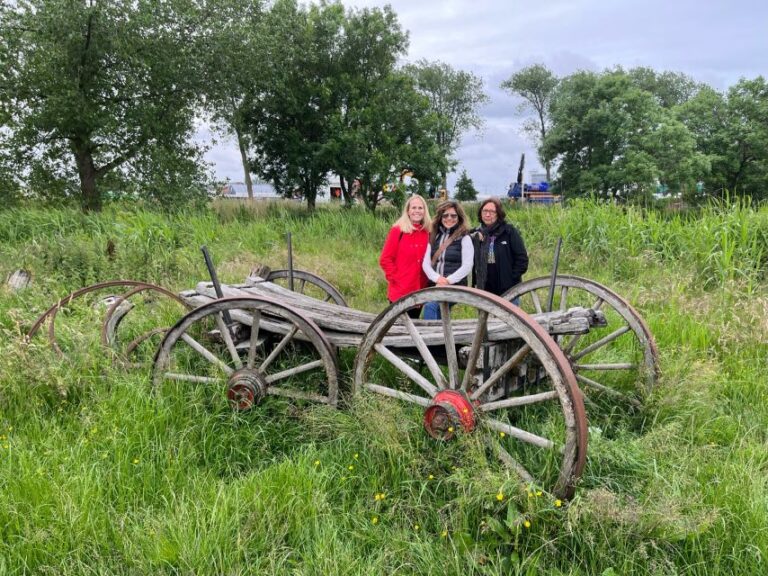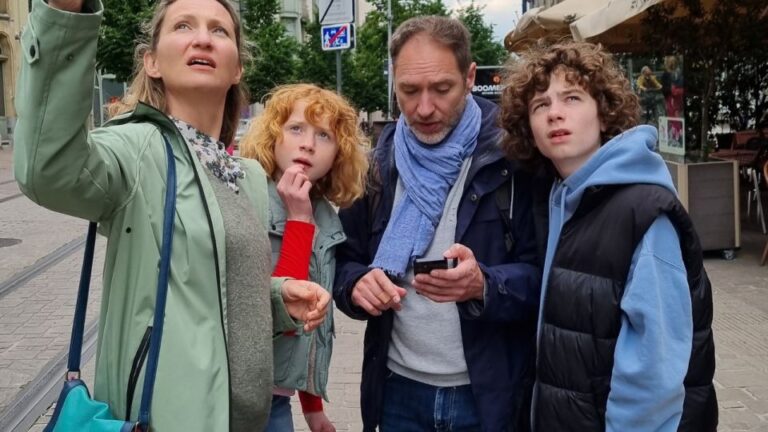In the winter of 1883, at the age of 30, Vincent van Gogh arrived in the small Dutch village of Nuenen. He took up residence with his parents in the vicarage of the Dutch Reformed Church, where his father served as the pastor. Little did anyone know that this quiet, unassuming town would be the birthplace of some of Van Gogh’s most iconic works.
During his nearly two-year stay in Nuenen, Van Gogh set up a studio in the wash room at the back of the vicarage. It was here that he honed his craft, working tirelessly with live models to create powerful studies of peasant life. In total, he produced an astonishing body of work during this period – around 200 paintings, countless drawings, sketches, and watercolors. This represents about a quarter of his entire artistic output.
A Prolific Period
The works Van Gogh created in Nuenen span a wide range of subjects and styles. He painted sweeping landscapes that capture the beauty of the Dutch countryside, intimate portraits of local villagers, and detailed studies of laborers at work. Some of his most notable pieces from this time include:
- The Old Church Tower at Nuenen (February-March 1884) – A moody, atmospheric painting of the village church, now housed at the Kröller-Müller Museum in Otterlo.
- Poplars at Sunset (October 1884) – A stunning landscape featuring the play of light through trees, also at the Kröller-Müller Museum.
- Head of a Woman with White Cap (1884-1885) – A sensitive portrait showcasing Van Gogh’s skill at capturing character, another Kröller-Müller Museum piece.
- Loom with Weaver (June-July 1884) – A detailed study of a weaver at work, demonstrating Van Gogh’s fascination with the lives of laborers, now at the Kröller-Müller Museum.
The Masterpiece: The Potato Eaters
But it was in April 1885, just a month after his father’s death, that Van Gogh completed his first large-scale masterpiece: The Potato Eaters. This dark, earthy painting depicts a group of peasants gathered around a simple meal of potatoes. With its rough brushstrokes and muted colors, it’s a far cry from the bright, expressive works Van Gogh would later be known for. But it’s a powerful piece that showcases his ability to imbue even the most humble subjects with a sense of dignity and humanity.
Sadly, Van Gogh’s time in Nuenen was cut short by a change in church leadership. The new vicar discouraged his congregation from sitting for Van Gogh, making it difficult for him to find models. Faced with this challenge, Van Gogh made the decision to leave Nuenen in 1885 and travel to Belgium to study at the Antwerp Academy.
Discovering Van Gogh’s Nuenen
Today, visitors to Nuenen can still see many of the places that inspired Van Gogh during his time there. The town has preserved over 20 sites related to the artist, from the homes where he lived and worked to the landscapes he captured on canvas.
Many of these sites are marked with informative boards that offer audio descriptions in both English and Dutch. It’s like taking a step back in time and seeing the world through Van Gogh’s eyes.
The Dutch Reformed Church
One of the most significant sites is the 19th-century Dutch Reformed Church, now known as the Van Goghkerkje (Little Van Gogh Church). This is the church where Van Gogh’s father preached, and which the artist painted in 1884. Standing in front of this building, you can almost imagine Van Gogh setting up his easel and capturing the play of light on the old stone walls.
The Vicarage
Just next door is the vicarage where Van Gogh lived with his parents. It was in the wash room of this building that he set up his studio and created so many of his Nuenen works. Behind the vicarage, you can see the pond that served as the subject for several of his landscapes.
The Thatched Roof Cottage
A short walk from the vicarage is a charming thatched roof cottage. Van Gogh visited this cottage regularly to mail letters to his brother Theo. It’s easy to see why the artist was drawn to this picturesque building – with its quaint thatched roof and rustic charm, it looks like something straight out of a painting.
The Watermill at Opwetten
On the outskirts of Nuenen, you’ll find the Watermill at Opwetten, another scene that Van Gogh immortalized on canvas in 1884. This old mill still stands today, a testament to the enduring beauty of the Dutch landscape that so inspired the artist.
Modern Tributes
Along With these historical sites, Nuenen also features some modern tributes to Van Gogh. One of the most striking is the Roosegaarde ‘Starry Night’ bicycle path. This innovative installation uses thousands of twinkling lights to create a mesmerizing pattern inspired by Van Gogh’s iconic painting. Cycling along this path at night is an unforgettable experience that brings the artist’s work to life in a whole new way.
Visiting the Vincentre Museum
No visit to Nuenen would be complete without a stop at the Vincentre Museum. Housed in the former town hall in the heart of the village, this museum offers a comprehensive look at Van Gogh’s life and work.
One of the highlights of the Vincentre is the detailed timeline of Van Gogh’s life. This chronological display is one of the most thorough and informative we’ve seen in our travels, offering a clear picture of the key events and influences that shaped the artist’s career.
The museum also features a wealth of original artifacts and documents related to Van Gogh’s time in Nuenen. You can see the official record of his residency in the town, complete with a notation from when he reported to city hall that he was leaving. There are also copies of sketches and studies he made during this period, offering a fascinating glimpse into his creative process.
Interactive displays bring the artist’s world to life, from projections of family members and acquaintances sharing their memories of Van Gogh, to viewfinders that let you compare Nuenen as it was in the 1880s to how it looks today. You can even see a recreation of a 19th-century loom like the ones Van Gogh painted in his studies of weavers.
Celebrating Van Gogh’s Legacy
If you’re planning a visit to Nuenen, 2015 is an especially exciting year. As part of the Van Gogh Europe Foundation’s “Van Gogh 2015” initiative, the town is hosting a series of special events and exhibits to commemorate the 125th anniversary of the artist’s death.
From guided walks to art installations to special exhibitions, there are countless ways to learn about Van Gogh’s world and celebrate his enduring legacy. Similar events are also taking place in other key Van Gogh locations across the Netherlands, France, Belgium, and England.
Whether you’re a die-hard Van Gogh fan or simply appreciate the power of art to capture a time and place, a visit to Nuenen is an unforgettable experience. Walking in the very footsteps of the artist, seeing the scenes that inspired him, and encountering his work in the context of his life – it’s a profound and moving journey that will stay with you long after you leave this charming Dutch village behind.
So add Nuenen to your Van Gogh pilgrimage itinerary. Book a guided tour, visit the Vincentre, and soak up the atmosphere that nurtured one of the world’s most beloved artists. In the quiet streets and gentle landscapes of this unassuming town, you’ll find a piece of art history that is very much alive and waiting to be discovered.


